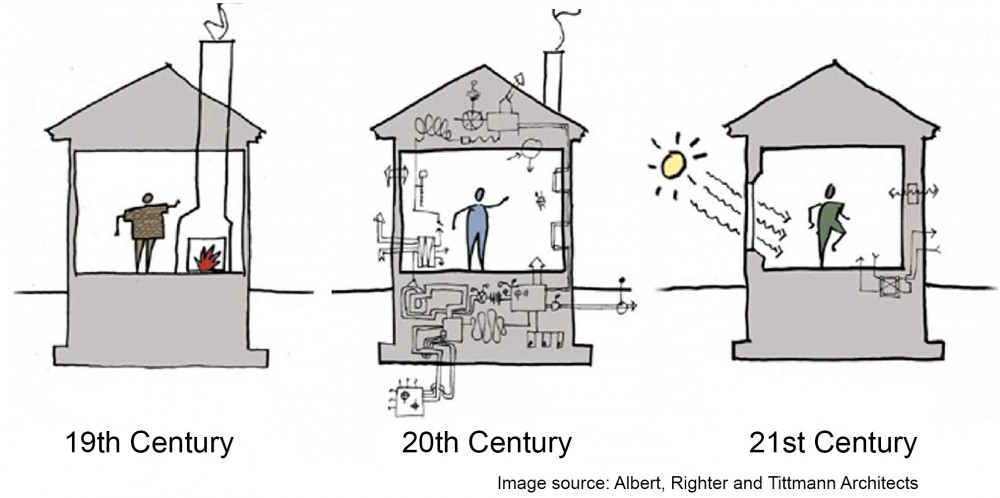
The term 'passive' in the context of passive house refers to the reduction or elimination of 'active' mechanical systems. There are many compelling reasons why this is a more intelligent and responsible way to build. Here is a quick list of benefits - in no particular order:
- Increased comfort.
- Improved reliability.
- Pristine indoor air quality.
- Dramatic cost savings.
- Redirect money from equipment to architecture.
- Protection from future energy cost increases.
- Reduced carbon footprint
- Reduced maintenance
- Resilience in times of power outages.
- Increased equity
The graphic above illustrates how we have come to rely on a myriad of complex machinery to maintain comfort in our built environment, and how passive house architecture is allowing us the option of moving away from all that expense, waste, and hassle.
19th Century: Buildings provided shelter from the weather, and flues made it possible to heat the interior with wood or coal.
20th Century: The hearth becomes an increasingly symbolic element as a myriad of machinery increasingly becomes accepted as the means to comfort in buildings.
21st Century: The idea of shelter is refined to shift the emphasis away from a reliance on machinery as a means of comfort in favor of intelligent design and improved construction. There is still equipment involved, but it is much simpler and smaller.
FREQUENTLY ASKED QUESTIONS ABOUT PASSIVE HOUSE DESIGN
How much does passive house design cost? Does it make sense financially?
Our experience has been that there is a range, from a high of an increased initial cost of about ten percent over conventional construction, to a low where the cost was actually lower. Several projects have been somewhere between.
The incremental cost of reaching Passive House performance depends on several factors, including the climate, the type of building, the availability of high quality building components, and the availability of qualified contractors. Here and in Europe, the costs continue to drop as Passive House quality building components become increasingly available.
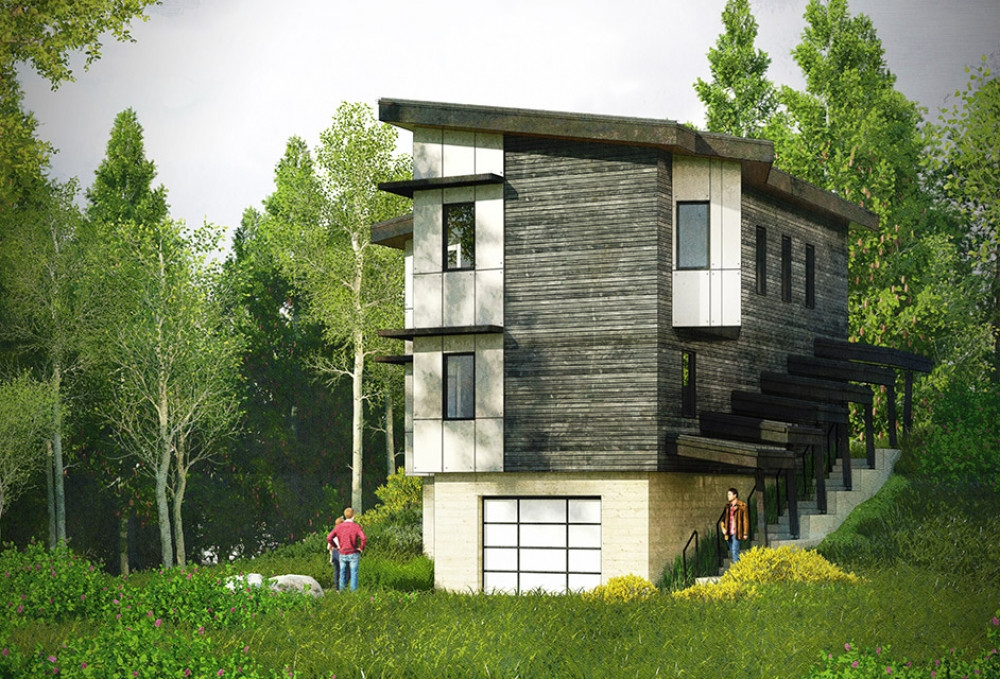
Are Passive Houses a good investment? Yes, absolutely - with an eighty to ninety percent reduction in annual heating/cooling fuel consumption the energy savings will easily cancel out the marginal increased up-front investment cost. Even at current energy prices the total monthly cost of owning a Passive House building will be very favorable compared to the total monthly cost of owning a conventional building. The Passive House building owner will enjoy higher indoor air quality and comfort, as well as security against rising fuel prices.
Can you open the windows in a passive house?
Sure. Throw a few windows open any time you like. The big difference is that when you close them, they will actually truly close and seal.
How can a house without a furnace be comfortable in the winter?
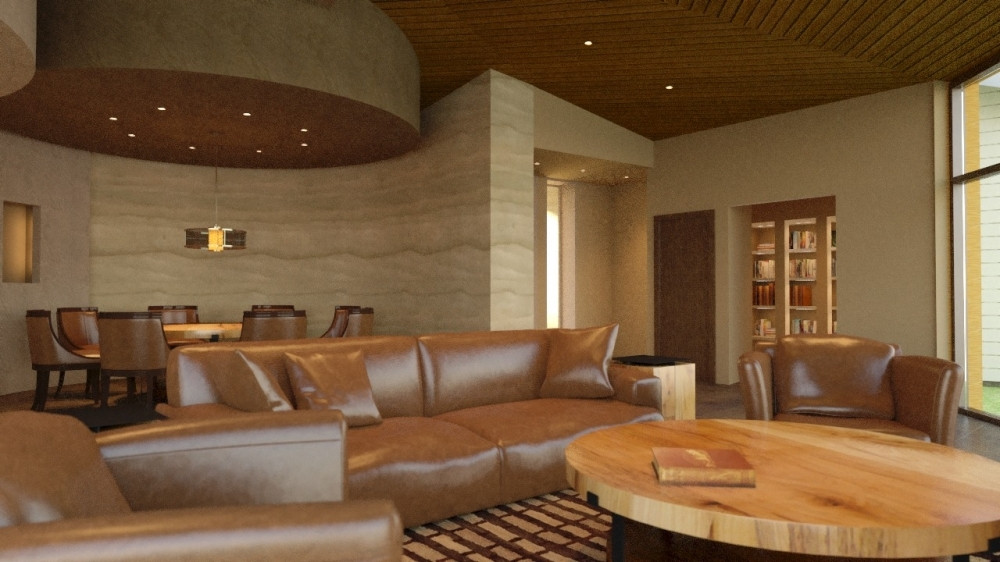
Perhaps a more interesting question is to turn this around and ask why we don't already build more intelligently, given the steadily increasing costs of energy? How is it that we've come to accept having just a few inches of fiberglass between our interior spaces and a freezing winter night or scalding summer afternoon? Given this mindset it's hardly surprising that we're a nation of furnace and air conditioner huggers, who can't quite imagine living without all that gear. In most climate conditions the Passive House approach will mean insulation performance of between three and seven times that of mainstream construction. When things get really uncomfortable outside, who wouldn't prefer to have a consistent, comfortable interior?
What's the catch? This sounds too good to be true.
There is no 'catch' - if anything, the real question should surely be, how could we rationally continue to build the way we have, arriving at a situation where forty percent of our national energy use is currently consumed by inefficient buildings? Standard design practice is to insulate only modestly, as building codes allow, then install a large furnace (and often an air conditioner). This is simply an outdated and irresponsible way to build. The Passive House approach has proven you don't need a conventional furnace or boiler to achieve high levels of comfort and indoor air quality in any building - if you design and build that building correctly in the first place.
Perhaps we should be asking ourselves why we currently accept houses which have little insulation and no passive survivability? How many houses remain habitable for more than a few hours in the event of a power cut in January? And who can be confident today that power and fuel will flow in all regions without interruption over the next 20 years, let alone beyond that time?
Do passive houses use solar, wind, or geothermal energy?
Not necessarily. Although they do reduce the energy demand to much lower levels where it may be truly feasible to provide whatever energy is needed entirely by renewable sources.
It is important to distinguish between the thermal efficiency of a building and the energy source or technology used to heat and cool it. Solar panels, windmills and geothermal heat pumps are external, bolted-on (and generally expensive) renewable energy systems which do not affect the thermal efficiency of the house itself. In a Passive House the primary goal is to achieve a superbly well-insulated and tightly sealed building envelope, then introduce fresh air in winter via a very high-efficiency heat recovery ventilation system. Of course renewable technologies like solar water heaters can be used on Passive Houses and are often installed if the budget permits. In addition, many cold-climate or cool-climate Passive Houses have a small, low-tech and inexpensive geothermal system for pre-heating incoming ventilation air.
If a passive house building uses over eighty percent less energy than a conventional one, that is still not as efficient as a 'zero net energy' house, right?
The goal of 'zero net energy' is to have a building making more energy than it uses, which is a wonderful (and achievable) goal. Some people get there by using a lot of renewable energy sources to meet their energy demands, but don't really do much to reduce those energy demands in the first place, which is not the most viable approach. Although ZNE buildings sound like an ideal solution to the person in the street, they have always been and will likely remain unaffordable for the average home buyer. The Passive House approach IS an affordable option for homeowners, however. For the same incremental investment in a single ZNE house it is likely possible to upgrade five or more similar-sized houses to the Passive House standard.
We think "the road to ZNE should lead through Passive House". All of our projects are designed to the passive house standard as a baseline minimum, and as such, are ideal candidates to become ZNE projects for a minimal additional initial cost. This approach makes zero net energy practical and affordable.
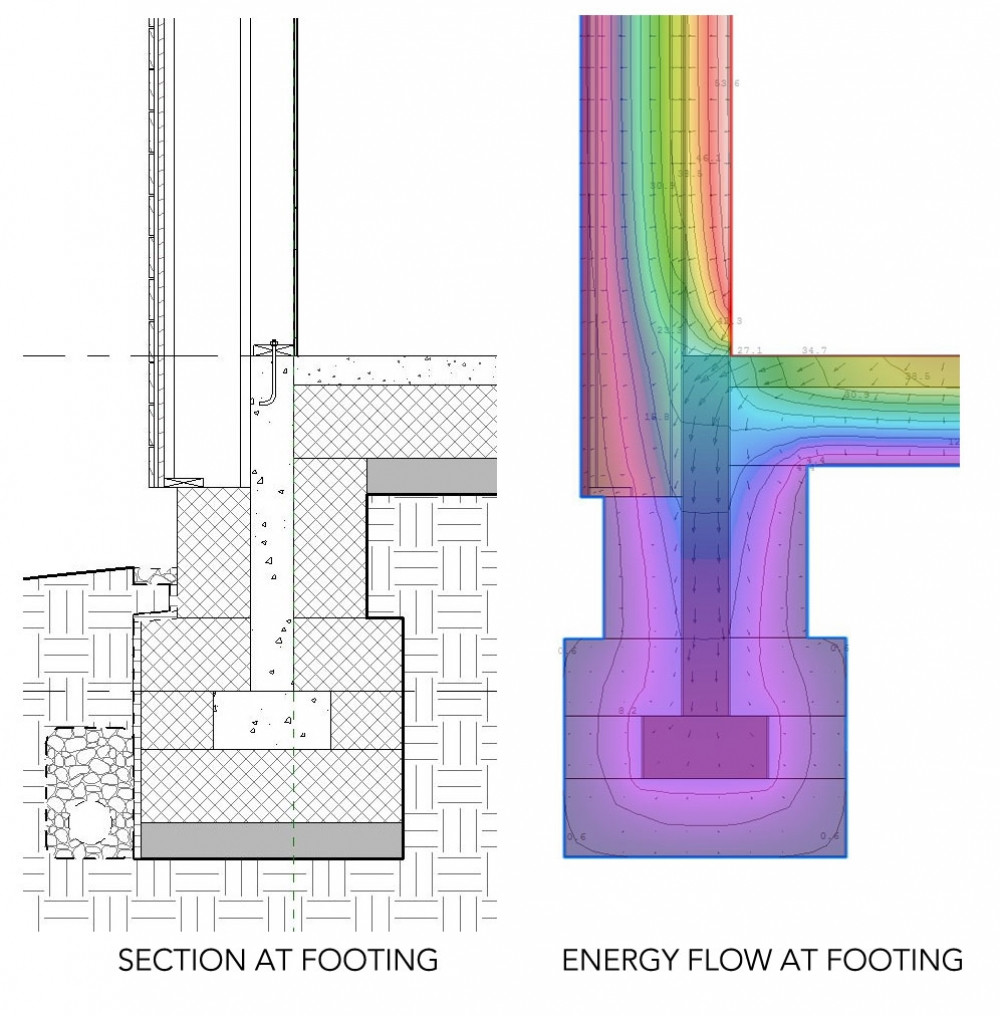
My builder says installing more insulation than the building codes require is uneconomic.
Your builder is correct in pointing out that every successive inch of insulation applied to a building yields progressively fewer savings, and nobody disputes that each extra inch of insulation has the same cost as the first.
Yet something surprising happens when you continue adding insulation to a building beyond what seems to be an economic level; at a definable point you reach a level of efficiency where a full-sized furnace is no longer required, because sufficient heat can be reliably be delivered to the building in winter (and cooling delivered in the summer) by other means. This allows substantial cost savings to be realized on the heating (and cooling) system, savings which can be put towards the extra insulation and better windows.
This 'definable point' happens to be the Passive House Standard. Your builder's logic turns out to be incorrect, since the net extra capital costs are heavily outweighed by the net fuel savings (and that's without taking into account possible dramatic rises in fuel prices in the future).
The bottom line is that it's uneconomic to spend thousands of dollars each year on energy bills created by expensive equipment we don't need.
Doesn't it waste energy to run a fan all the time? Why would you ventilate a building in the winter?
To some people it sounds plain wrong to have a ventilation unit running all winter. The reality is that a lot of energy is required to heat air (or cool it during summer), yet very little energy is needed to move air around via an efficient fan. This is just physics. Therefore in order to achieve low energy use in a building, air leakage has to be minimized, or the heating energy you pay for just ends up leaking outdoors. All Passive Houses must achieve a stringent airtightness requirement. Certified Passive House ventilation units have exceptional fan energy performance, so the cost of running one of these units is $50 - $70 per heating season, depending on your electricity price, with much of this energy cost recovered in the form of heat. Therefore from an energy perspective as well as an air quality perspective this is an excellent investment with extremely high payback!
What about straw bale houses, that are supposed to be so energy efficient?
We are occasionally approached by people who want us to design a straw bale home. That's not likely to happen. We won't build straw walls in a developed country, any more than we would build wood roofs.
It is true that a straw bale wall performs better than a conventional wood framed "R-21" 2x6 wall (which actually has a true R-value of about R-12 due to thermal bridging through the wood studs). Researchers at Oak Ridge National Laboratories have determined that 19 inch straw bales have a measured R-value of around R-23, or double that of a 2x6 frame wall. In addition, straw clearly has good embodied energy characteristics as a natural, locally produced material. But straw has the fatal disadvantage of being an organic material, subject to eventual attack or decay from rodents, water, molds and fungi. This means it must kept dry throughout the life of the building, or its performance and longevity can easily be compromised, at huge cost to the owner. And in reality, keeping moisture out of wall assemblies is literally just not possible - moisture constantly travels through construction assemblies in the form of vapor and humidity.
Finally, 'straw bale' is not a standard or a construction system. It is just a way of building a wall around a separate structural frame, and often an expensive one at that. Passive house design will run circles around the actual performance of straw bale buildings.
What about the concerns about 'embodied' energy? Passive house design and construction seems not to be looking at this.

Responsible choice will look at the lifetime environmental impact of design. Over the past 20 years numerous US, Canadian and European studies of the overall impact of buildings have reached the same conclusion - that annual energy use is by far the largest determinant of environmental impact, amounting to between 70 and 85% of the total lifetime footprint. The materials used are important, but their impact is far outweighed by the actual thermal performance of the building. If you design a building to use dramatically less heating and cooling energy, this will make the most significant reduction on overall environmental impact. We still think about embodied energy, but it's a less important consideration than the long term performance outcomes.
Weren't super insulated houses a big thing in the 1970's? There were all kinds of problems.
It is true that thousands of passive solar houses were built at this time, but their performances were often poor: they were drafty, not too comfortable, they cost far more to heat than predicted, and they frequently overheated during summer. These were prototypes, yet their designers were nevertheless correct in recognizing the great potential for solar heating. The Passive House approach to construction was developed in part by careful analysis of past mistakes. It uses cutting-edge building science to design buildings of outstanding efficiency, which maximize natural on-site heating and cooling opportunities. Over the past 30 years great progress has been made in developing a better understanding of building science and performance, as well as better design tools. In addition, superior components (e.g., windows, ventilation systems) are now available. If you look in detail at an older 'passive solar' house it tends to be full of significant design errors, from serious thermal bridging and under-insulation in walls, floors and roofs to poor air sealing and over-glazing on south facades. Such errors and problems are not found in today's Passive Houses.
Just because passive house works in Europe, why would it work where I am building, where the climate is so different?
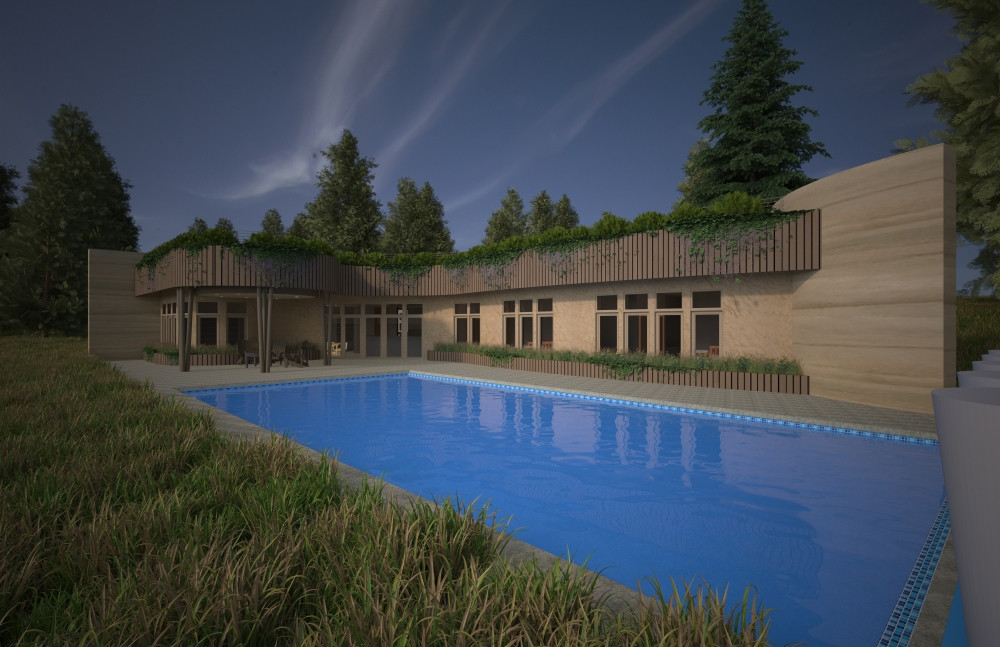
The Passive House approach works because it is a pragmatic combination of applied building science and economics. All Passive Houses are designed using rigorously predictive software, which allows us to find the ideal balance within a combination of insulation and components required to bring any building to the required performance standard in a given climate zone. And the climate data specific to each project location - for every day of the year, including worst case conditions - is what the design software uses to calculate heating and cooling loads.
Passive Houses are now being built in many severe climates, from central Russia to Finland, northern Minnesota, northern Norway and Sweden. Extreme climates make a perfect fit for the Passive House approach.
Can existing buildings be remodeled to the passive house standard?

That's a question that should be answered on a case by case basis. Although it can be possible to dramatically cut the energy consumption of a house or building, perhaps close to Passive House levels, it may not be cost-effective to do so, depending on the state, shape, size and age of the existing conditions.
How about overheating in the summer with all those windows and great insulation?
One of the design requirements for any Passive House is to ensure summer comfort, and our design software does detailed calculations of summer cooling loads. Buildings must be designed with appropriate summer shading on south-facing glazing. In areas of high summer temperatures where cooling loads predominate, it often becomes necessary to minimize east- and west-facing glazing and/or use spectral selective glass to reduce summer overheating. The quantity and solar orientation of glass, like every other building component, is determined by the designer, working with the passive house thermal design software, client requirements, and fundamental principles of solid architectural practice.
Can you build apartments or condominiums to the passive house standard?
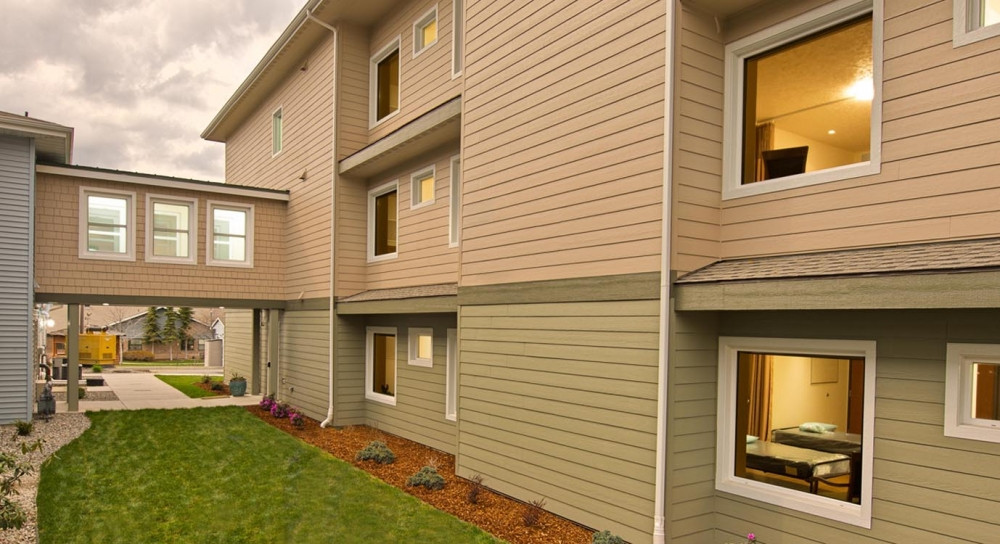
Yes. We can design any type of building this way. In Europe there are Passive House schools, office buildings, supermarkets, retail centers, gymnasiums, health clubs - and thousands of Passive House apartment units. The largest current apartment development is the Lodenareal complex in Innsbruck, Austria, which has 354 rental apartments and 128 condominiums, all built and certified to the Passive House Standard.
We recently completed a 58 bed boarding home, certified by the Washington State Department of Health, which was awarded top honors by the Passive House Institute for the best institutional project in the nation.
So, buildings designed to the passive house standard are simpler to build in many ways?
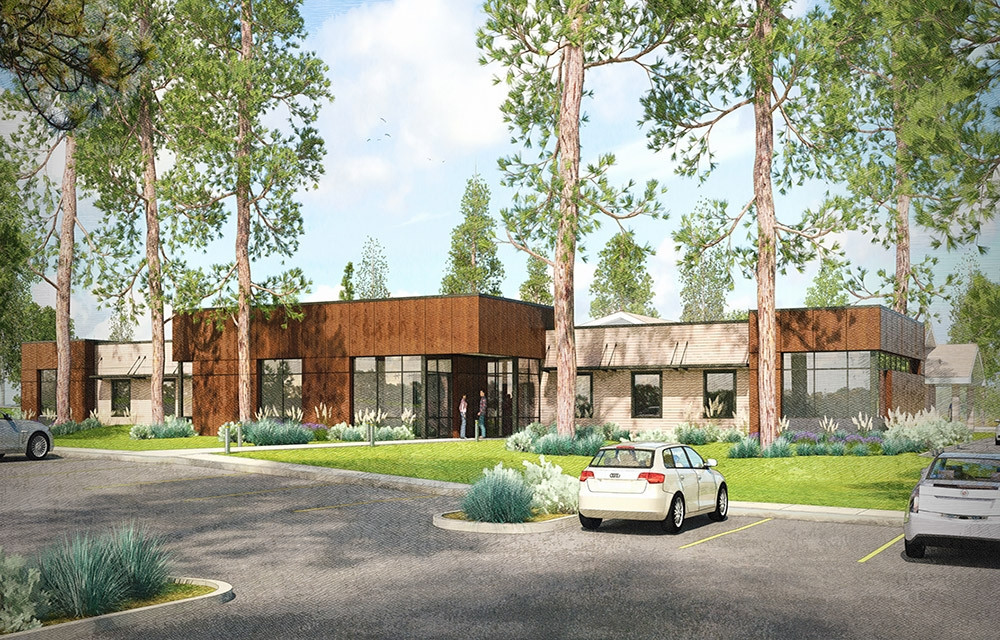
Passive House buildings don't look especially different from other buildings - this approach to construction is a performance standard, not a prescriptive style of building. Each region has its own construction traditions, architectural styles and local materials, as well as specific climate conditions. Passive House solutions will differ significantly from region to region. Although passive house buildings usually have greatly simplified mechanical systems, this apparent simplicity conceals a wealth of refined architectural/engineering planning and detailing throughout. Consequently passive house design requires specialized professional training and experience, even for the most knowledgeable architect or builder. It's safe to say that not a single building envelope detail in the current building code is thermally adequate to attain Passive House performance.
